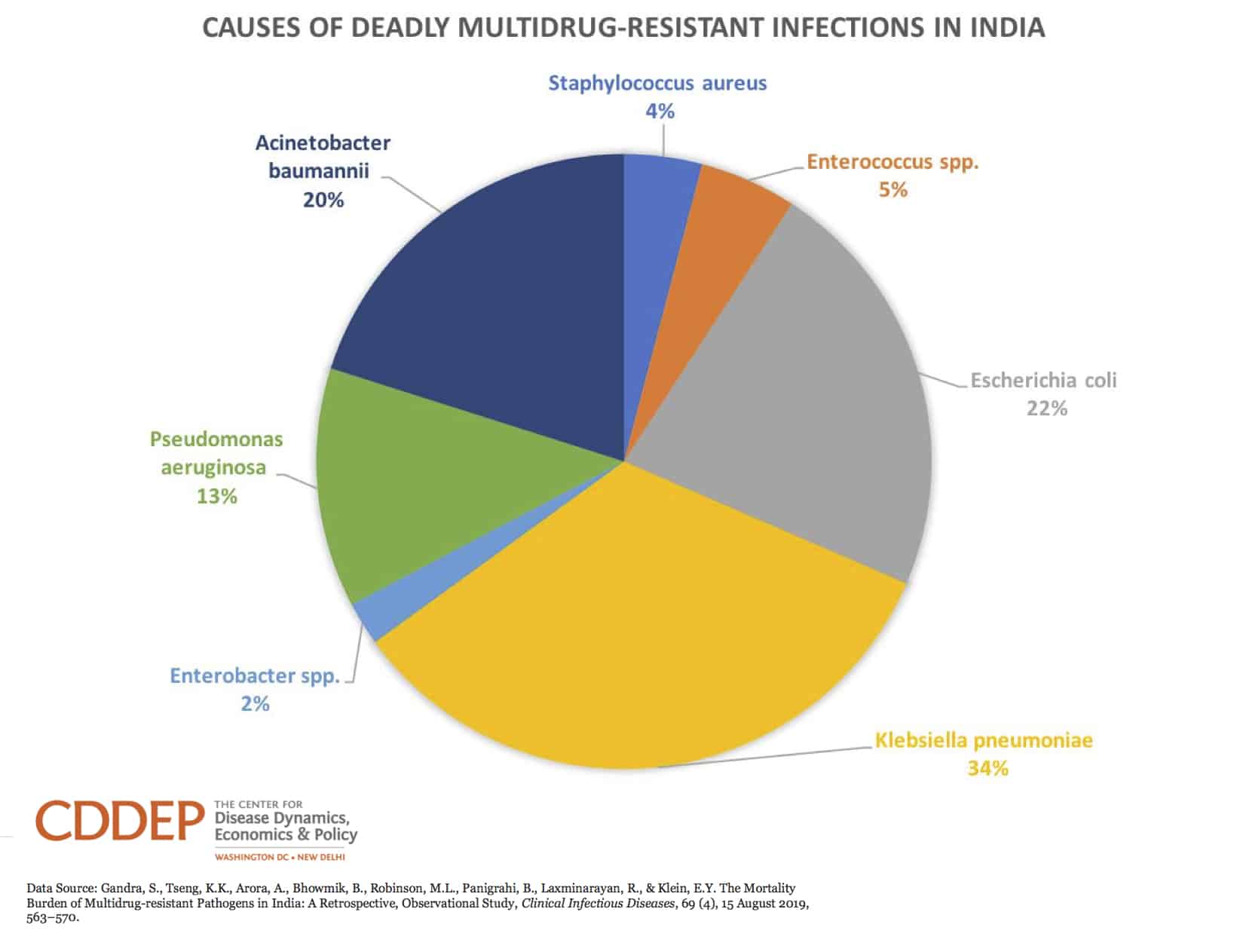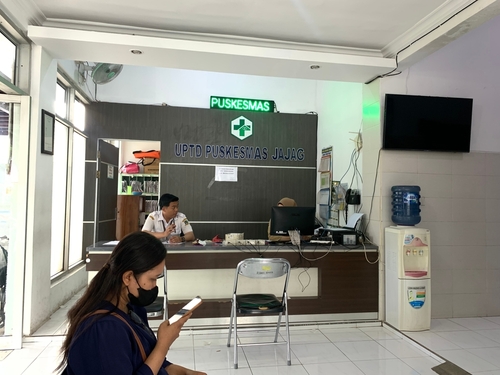August 12, 2019

Taxes on alcohol, tobacco, and sugary drinks linked to health and economic gains worldwide. In a recent analysis for the Task Force on Fiscal Policies, CDDEP researchers Ramanan Laxminarayan and Amit Summan found that increased taxation may decrease the consumption of alcohol, tobacco, and sugary beverages across the world while providing both economic and health gains. They emphasized the need to reframe the term “excise taxes” to prevent push back and to redirect existing subsidies to support this idea of using fiscal policies to improve health. The researchers also recommended that governments put revenue gains towards the development of programs that may benefit consumers who are disproportionately affected by these taxes. [Milken Institute Review, CDDEP]
Reservoirs of drug resistance found in London. Scientists from London and Shanghai analyzed 600 staphylococci isolates found on high-touch surfaces across East and West London. All samples had some resistance to at least one of 11 commonly used antibiotics, and 46.83 percent of the bacteria were multidrug-resistant (MDR). A significantly higher proportion of MDR staphylococci was found in East London, where people live closer together, compared to the proportion found in West London (p=0.0002). Resistance to older antibiotics such as penicillin and erythromycin was higher than to newer antibiotics. [Scientific Reports]
Promising HIV vaccine to be tested in thousands of high-risk individuals. For over three decades, scientists have been attempting and failing to develop a vaccine that protects against Human Immunodeficiency Virus (HIV). A new “mosaic” vaccine targets the most strains of HIV and may provide the longest-lasting benefits of all HIV vaccines that have ever been tested in humans. The mosaic vaccine was created using HIV strains from across the globe and has successfully prompted an immune response in small human trials. Beginning in September, the mosaic vaccine will be tested in thousands of high-risk Americans and Europeans (men who have sex with men and transgender persons) to determine its effectiveness in protecting against HIV infection. [Nature]
WHO highlights trends in HIV drug resistance. The World Health Organization (WHO) released the 2019 HIV Drug Resistance (HIVDR) report last month, which consists of data from 44 nationally representative HIVDR surveys in 24 low- and middle- income countries between 2004 and 2018. In 12 out of 18 countries surveyed, pretreatment HIV drug resistance (PDR) to efavirenz or nevirapine was above 10 percent in adults. Overall, PDR was about twice as high among women compared to men (p=0.005). Individuals with previous exposures to ARV drugs, including ART for HIV, pre-exposure prophylaxis (PrEP), and post-exposure prophylaxis (PEP), also had a higher risk for PDR (p≤0.0001). [WHO]
Taco Bell to reduce antibiotic use in beef supply. Taco Bell, a popular fast-food chain in the United States, announced its plan to cut antibiotic use in their beef supply by 25 percent within the next six years. Critics from the National Resources Defense Council (NRDC) note that while this is a step in the right direction, Taco Bell’s plan only calls for a modest reduction in antibiotics and fails to identify how these reductions will be measured. [NRDC]
Resistant Klebsiella spreads through hospitals across Europe. European researchers isolated more than 1,700 samples of Klebsiella pneumoniae from patients across 32 countries in Europe to analyze genomic sequences and the spread of the resistant pathogen. The study found that nearly 70 percent of the carbapenem-resistant K. pneumoniae isolates were derived from four clonal lineages. Researchers suggest that carbapenemase-positive isolates were transmitted between patients in more than 50 percent of hospitals, and inter-hospital spread of the pathogen was more likely to occur within countries rather than internationally. [Nature Microbiology, CIDRAP]
Highly resistant bacteria found in US patient following procedure in India. In December 2018, Carbapenem-resistant Klebsiella pneumoniae was isolated from the urine of a 65-year-old man who had undergone medical procedures for lower urinary tract symptoms in India the month prior. The isolate showed resistance to 15 antibiotics and harbored metallo-beta-lactamases, which can spread easily throughout healthcare settings. In a report by the US Centers for Disease Control and Prevention, researchers emphasize the need for infection control assessments in outpatient settings with high transmission risks, as well as carbapenem-resistant Enterobacteriaceae screening for patients who received a procedure abroad and will subsequently be hospitalized in the US. [CDC]
C. auris identified in two patients in Mysuru, India. Researchers identified the deadly multidrug-resistant fungus, Candida auris in two patients at the JSS hospital of the city in Mysuru, Karnataka, India for the first time. C. auris has a mortality rate between 43 and 60 percent and an incubation period of 96 hours. It can cause death within 30 days and is currently being controlled by drugs that may become obsolete in the near future. Some blame the increased use of pesticides and antibiotics for the increased presence of the fungus. [Times of India, Deccan Herald]
Flu drug decreases viral shedding in patients with uncomplicated influenza. A team of researchers evaluated the impact of oseltamivir (an antiviral drug commonly used to treat the flu) on viral shedding in patients with uncomplicated influenza across Thailand, the United States, and Argentina. Viral shedding is associated with the transmissibility and infectivity of a virus. On day 3 of the study, the flu virus was detected in significantly fewer of the patients who had received oseltamivir compared to those who had received placebo (p=0.010). Patients who received the antiviral also saw more rapid alleviation of symptoms (79 hours) compared to those who received placebo (84 hours), although this was not statistically significant (p=0.34). [Clinical Infectious Diseases]
Uptake of drinking water vaccination among chicken flocks highly variable. A group of Australian researchers collected tracheal swabs from flocks of meat chickens to determine the uptake and bird-to-bird spread of an infectious laryngotracheitis virus (ILTV) vaccine via drinking water. Results were highly variable; only between 3 to 52 percent of chickens showed early uptake of the vaccine at 4 days post-vaccination. The study found that in flocks where early vaccine uptake is less than 17 percent, bird-to-bird transmission to the rest of the flock may be slow and may leave many birds susceptible to the ILTV during an outbreak. [Vaccine]
Starting this week. Infographic of the week: Please feel free to use and share widely!

In a 2018 CDDEP study, researchers examined the association between multidrug-resistant (MDR) and extensively drug-resistant (XDR) bacterial infections and in-hospital mortality outcomes among over 4,000 patients hospitalized across India in 2015. Common causes of deadly MDR bacterial infections included Klebsiella pneumoniae, Escherichia coli, Acinetobacter baumannii, and Staphylococcus aureus. [CDDEP]











